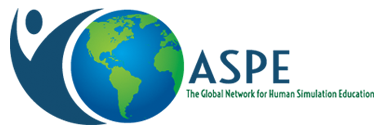By Jeffrey N. Siegelman, MD, Department of Emergency Medicine, Emory University
Submitted by: Dan Brown, Emory University
A baby boy was born. In the ensuing days, the post-partum mother developed edema as her blood pressure rose. Then came headaches. As the mother inched towards eclampsia, her liver and brain began to suffer. This was the setting for a simulation case designed to assess Emergency Medicine residents’ performance in decision-making, care, and communication with a postpartum patient in the emergency department. I never thought its impact would reach as far as it did.
I had run the case before. A mother presents unconscious after a first-time seizure. The resident examines the patient, checks a fingerstick glucose, and orders an appropriate evaluation - all facilitated by a simulated nurse. The resident’s communication skills are challenged when the patient’s Spanish-speaking husband arrives and the resident must call for and appropriately work with a medical interpreter to obtain the history of a recent delivery, ultimately making the diagnosis of eclampsia. Magnesium is ordered; the patient does well. We debrief.
The former critical care and emergency nurses who participate in the simulation session often ask questions, exploring the medicine behind the case out of curiosity. Still, I was surprised to receive the following email from Carol*, one of our nurses:
I am writing to tell you how the EM Milestone case about the Spanish-speaking couple with the wife with HELLP syndrome prepared me for my daughter’s recent post-partum illness.
I have been in Houston for six weeks. I self-quarantined for the first two weeks, then waited ten more days for my grandson’s birth on May 3. Jean’s* BP was perfect throughout her pregnancy, labor, and delivery. Her feet were quite swollen near the end, but aren’t everyone’s? Four days post-partum we were at home and she remarked that her feet were getting more swollen, not less. She also had a headache. I had brought a BP monitor with me to Texas so checked her BP which was 150/90. Not good, but not horrible. I remembered the case we had done and immediately thought of post-partum pre-eclampsia. I thought about the case and knew she needed magnesium. An hour later her BP was up to 176/106. She was admitted to the hospital where she was put on a Mg infusion and received labetalol and Tylenol with codeine for her worsening headache. Thankfully, it all resolved in a few days with proper treatment before she reached the seizure stage. I didn’t see all her labs, so I don’t know if she made it all the way to HELLP syndrome, but her LDH was 790.
All that to say, thank you so much for casting me for that case! Had I not learned about post-partum pre-eclampsia during that case, I would not have even known it could occur after delivery. I would not have realized the urgency with which she needed to get to the hospital to get the magnesium.
I had hoped that participating in the assessments would help the residents identify eclampsia in the future, know how to treat it, and to communicate more effectively with non-English speaking patients. I am grateful that Carol also learned from the case, and in doing so recognized that her daughter was heading down a dangerous path. As a teacher, it is rare and inspiring to see the direct impact of a lesson touching a patient’s life, when so often we can only measure improved knowledge or perhaps behavior in a simulated encounter. In this case, it was even more remarkable to have had this effect on a patient we had not anticipated.
*Names have been changed for privacy. The author of the e-mail contained in this manuscript provided written consent for its publication.
Acknowledgments: I would like to thank the talented staff in the Emory School of Medicine Human Simulation Education Center, and the simulated patients and nurses they recruit and train, for the generosity of expertise and passion they bring to their work.
Publications Committee Mission: “To bring high quality reporting of current research, trends, techniques and information regarding SP methodology and other relevant industry articles to the attention of the membership through the web-based ASPE eNews blog.”
Please provide comments, questions or suggestions about the ASPE eNews Blog here.
